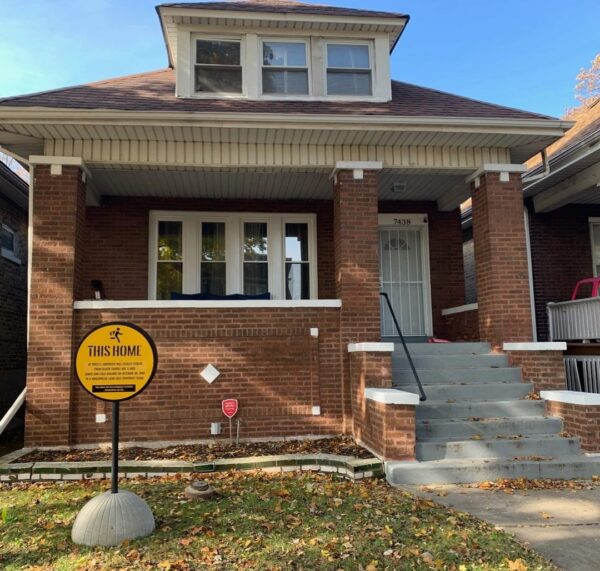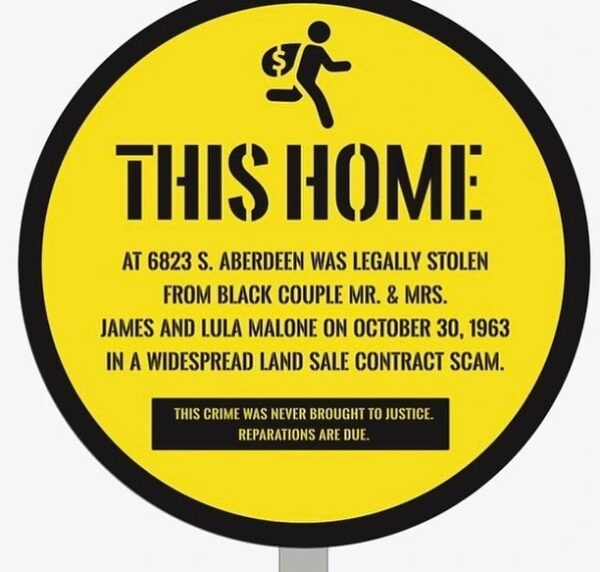Tonika Johnson, a lifelong resident of the Englewood section of Chicago, is documenting the history of land sale contracts, a discriminatory housing practice that made Black residents feel the dream of homeownership was attainable, but in reality, was out of reach. The photographer and social activist has launched an installation exhibit and podcast documenting the story of housing inequality that prevailed in the 1950s and 1960s. The project, “Inequity for Sale,” received funding from the National Public Housing Museum after Johnson was selected as its 2021 Artist As Instigator.

“We weren’t able to experience the economic benefits of homeownership such as building up household wealth via home equity,” Johnson told Crain’s Chicago.
The project includes a three-part series podcast as well as a walking tour featuring an installation exhibition that will include 10 to 15 life-sized landmarks on homes in Englewood and West Englewood that were once land sale contracts.
“Inequity for Sale” builds on Johnson’s Folded Map Project. A multimedia, participatory project, Folded Map defines current urban segregation, the disparities existing between the North and South sides of Chicago and the impact on residents. “Inequality for Sale” reveals the root of these disparities–looking at the legal tools used to discriminate against Black residents in Chicago.
“With Inequity for Sale, I aim to kind of fold time to connect the history to the present, helping people understand how history created the disparity that we see today,” Johnson said during the “Legally Sold” podcast. This deals with the core of what we’ve learned generational wealth, how you build it, which is home ownership. But even more importantly, to me, it helps people understand. The unfair use of the law and greed and capitalism to take advantage of a group of people through contracts.”

Land Sale Contracts Provided Empty Promises of Home Ownership to Black Chicagoans
Historically, Black residents of Chicago did not have access to traditional mortgages as a result of racist policies. During the 1950s and 1960s, land sale contracts, also known as LSCs, were offered to Blacks with the dream of homeownership. Speculators would purchase homes and sell on contract at a markup of at least 84 percent. This would lead to high monthly payments for residents and often ownership was never transferred.

A 2018 study conducted by Duke University, “The Plunder of Black Wealth in Chicago,” revealed that 75 to 95 percent of homes sold to Black families during the 1950s and 1960s were obtained through land sale contracts. As white Chicagoans were able to transition from working to middle class as a result of the Post World War II economic boom, Black residents were left unable to grow economically or socially as a result of LSCs, redlining tactics and de facto segregation.
“About $3.4 to $4.3 billion dollars in today’s dollars was legally and unjustly stolen from the Black community through contract selling,” Amber Hendley, author of “The Plunder of Black Wealth,” shared in the “Legally Stolen” podcast. “The issue in and of itself was not contract selling. It was redlining and redlining took money from us through contract selling.”




